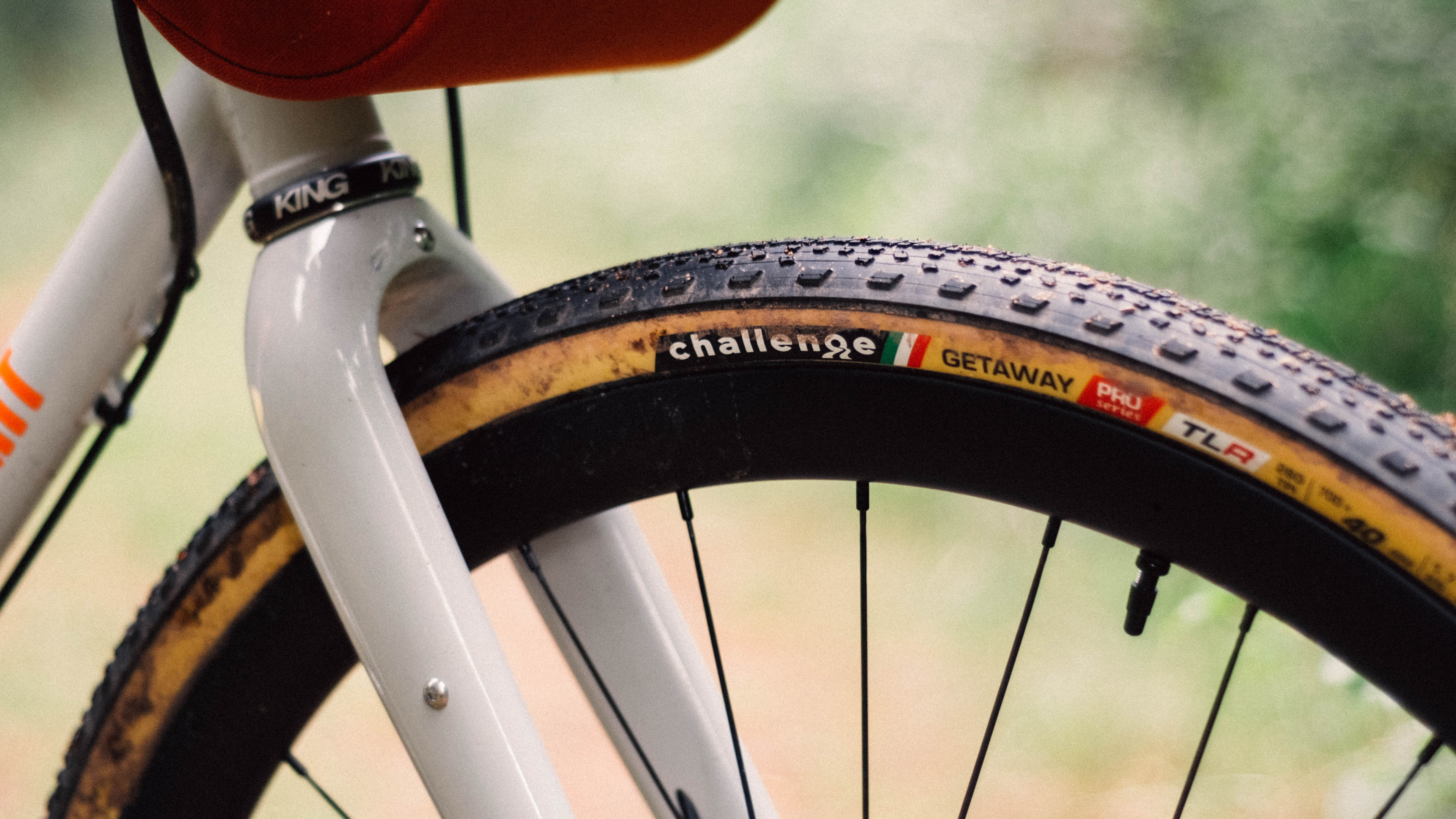Cyclingnews Verdict
A sublime ride and low rolling resistance make it a fantastic race option if you avoid anything sharp
Pros
- +
Sublime ride quality on and off road
- +
Fast, very fast
- +
Classic looks
Cons
- -
Fragile
- -
Can feel squirmy at lower pressures
You can trust Cyclingnews
Line up at any cyclo-cross race, or tune in to watch one, and the start line is focused on one thing and one thing only: tyres. While road tech has a swirling nebula of advancements, cyclo-cross, while it has for sure seen its fair share of tech leaps, is really a game of tyres; they make more difference to performance than any other component. Cotton-cased tyres are the name of the game, and in the pro ranks outside of North America, you’ll only really see riders using tyres from FMB, Dugast, and Challenge. The latter supplies tubular race tyres to current world champion Tom Pidcock, and clincher tyres to the rest of us and is probably the biggest supplier of cotton tyres to the general public.
The cyclo-cross vs gravel debate has been well and truly laid to rest, but as a brand renowned for making tyres for fast off-road use, it isn’t a huge surprise to see Challenge expanding its range of gravel tyres, originally confined to the Gravel Grinder, a plumped out version of its Chicane dry weather cyclo-cross offering. The range has expanded, and I’ve been putting some miles atop a set of its new 40mm Getaways. Do we need to expand our list of the best gravel tyres to include them?
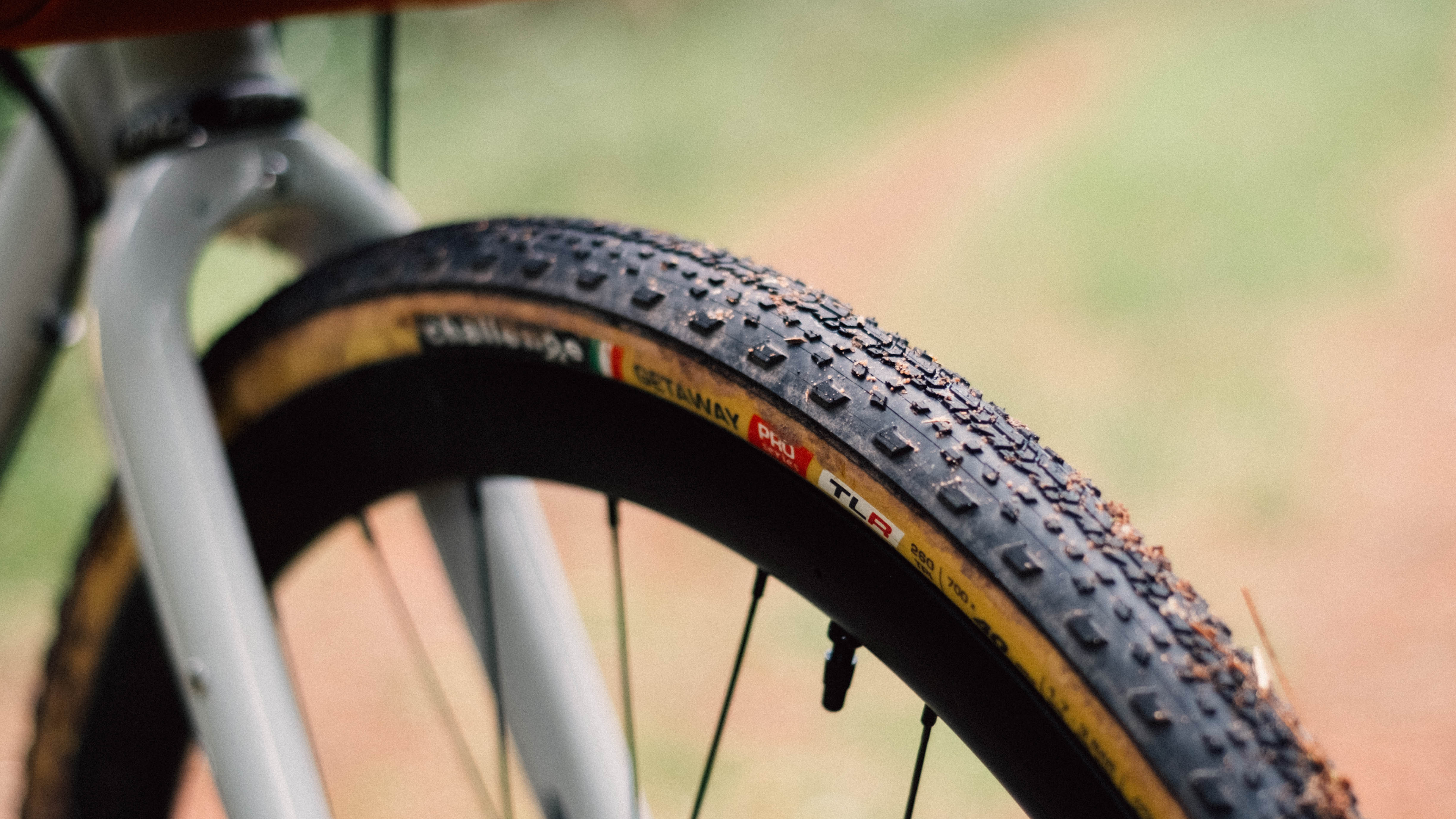
Design and aesthetics
Challenge's ‘open tubulars’ (clinchers, to you and I) are constructed differently from a standard vulcanised rubber tyre. A cotton band is sewn into a loop with a bead inserted at the edge, and the actual rubber tread is then glued on afterwards. This is how all fancy race tyres used to be made, and what many modern tan-wall tyres that you find on the best gravel bikes try to ape from an aesthetic standpoint, but these are the real deal.
The casing is incredibly pliable at 270 threads per inch, and feels as you’d expect for rubber-impregnated fabric. It’s not quite as supple as the 300TPI of the brand's CX offerings, and is double thickness in the sidewalls, presumably to add a little more puncture protection and support in cornering. If you’ve never purchased a set of Challenge tyres before, getting them out of the box is a little surprising as they lie absolutely flat like a ribbon, which does make mounting a bit more of a task.
The tread in the case of the Getaways is clearly an option attuned to dryer conditions. The central belt comprises tightly spaced, arrow-shaped knobs that more or less create a solid band before transitioning into much more widely spaced intermediary knobs and larger, very well-spaced shoulder knobs that are similar in shape to those on the Gravel Grinder, but far less pronounced in height. The knobs themselves aren’t tall either, a couple of millimetres at most, further alluding to the fact these aren’t aimed at carving through so much slop.
From a purely aesthetic standpoint, having proper tan walls looks really quite cool on more or less any bike, and the branding is classic Euro, the tyre equivalent of a sponsor-soup jersey; a far cry from the minimalist approach of WTB and the like.
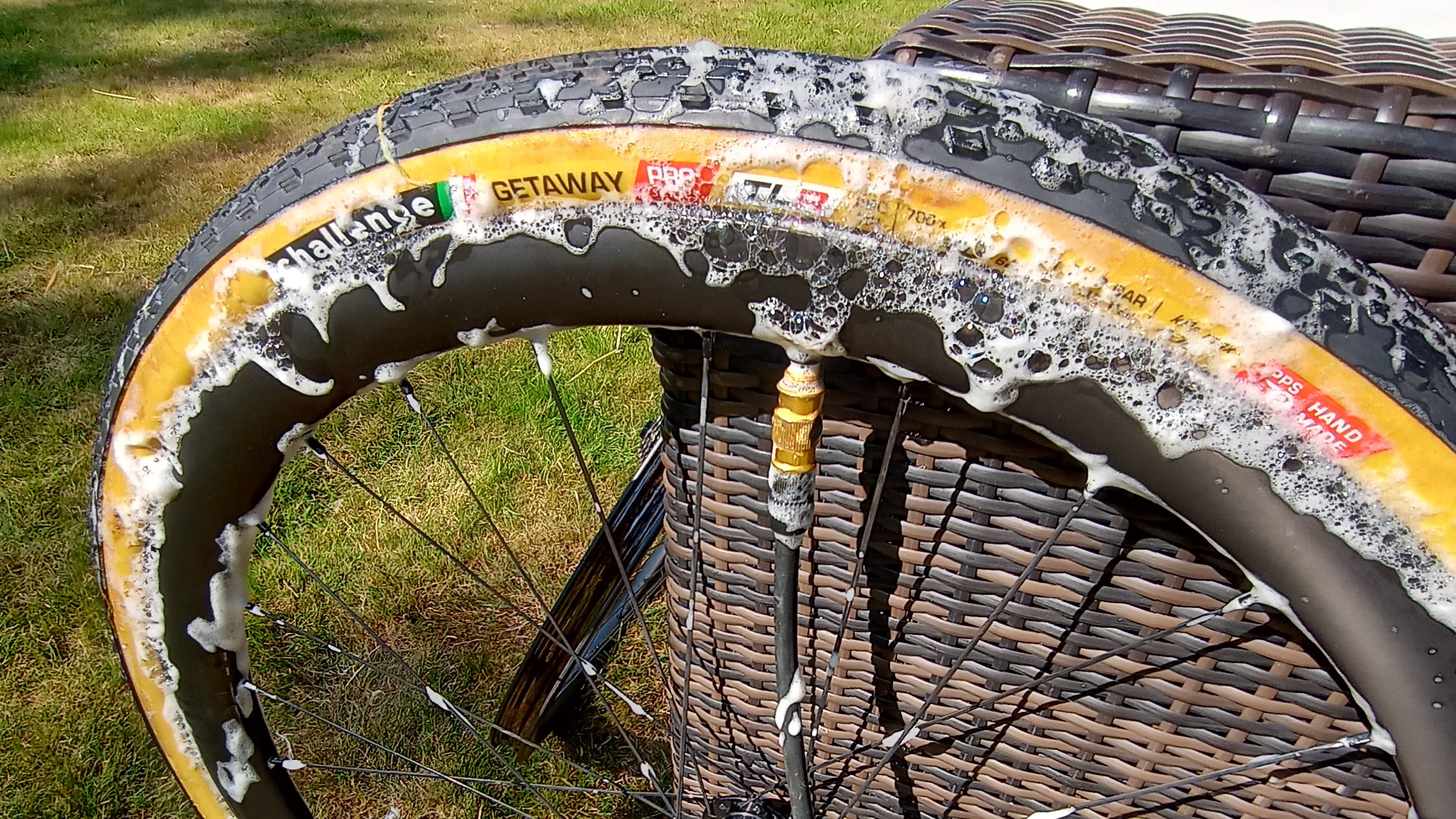
Performance
There’s no getting away from the fact that setting up tubeless tyres is more challenging with cotton casings. First of all the tyre wants to lie flat, meaning teasing the bead on initially feels like it needs a third arm; you end up with both beads in to start with, and a tyre tread lying absolutely flat, perpendicular to the wheel sidewalls. The Challenge Getaways were relatively difficult to seat on my set of Parcours Alta wheels, requiring plenty of soapy water and coarse language, and with the suggested Challenge Smart Tubeless Sealant they took longer than average to hold their air. Cotton, even rubber impregnated, will take longer to seal than a vulcanised rubber carcass.
If you’ve never ridden hyper-supple tyres, it’s worth trying even if you just throw a leg over one of your mates' bikes for a bit. The way they eliminate the buzz of bad tarmac as you dart between gravel sections is sublime. Either on or off-road you don’t so much ping off divots and potholes and roots as gently rock through them much like a yacht in slightly choppy waters. It’s a little like the suspension on a Rolls Royce or an old Citroen (guess which one I have experience with).
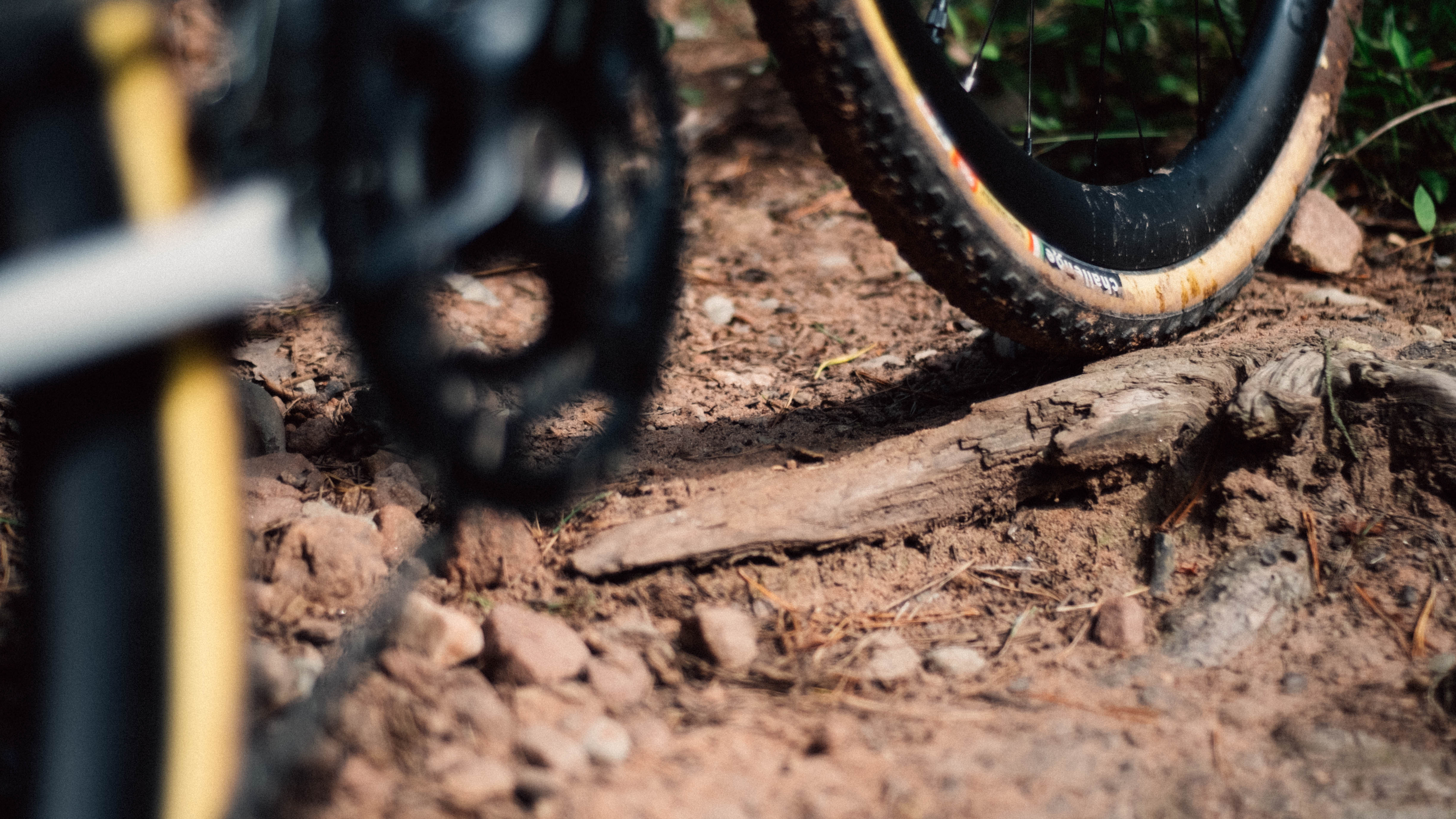
While these aren’t a tyre for tarmac they do carry their speed well enough on the black stuff, and given most of us will ride at least some road when doing a gravel ride it is worth noting that they don’t hold you back in this regard, and thanks to the construction you also aren't subjected to the hum from the knobs as you tick along either.
Off the road, they truly are a delight. The low rolling resistance that comes from the high TPI and the fast centre tread, along with the relatively low weight of 440g means they fly along and never feel like they hold you back from a drag perspective. The straight line grip is excellent too, again thanks to a combo of the tread pattern and the larger footprint afforded by the supple carcass. Unlike the WTB Byway tyres I've also been recently testing, these can stand being run a little firmer without sacrificing comfort, which is of benefit if you do end up spending more time on the road than you’d perhaps like.
In the corners, the side knobs do a decent job, with a progressive letting-go-of-grip that’s predictable - if not the most confidence-inspiring - in high speed, tight cornering; stick a leg out though and you should be fine. Having ridden the Gravel Grinders for years, I do appreciate the get-out-of-jail-free card that the ultra-aggressive shoulder lugs offer in loose terrain, but I’d suggest that the Getaway is a tyre more suited to racing and riding on more open, flowing gravel tracks rather than twisty forest single and double track.
Back onto tyre pressures for a moment finally, as running these too low can result in a more squirmy experience as the sidewalls don’t necessarily have the stiffness to support the cornering forces, and you can sometimes feel them folding under you. If you’re running a modern gravel wheelset this will be less of an issue, but if you are on older rims (I'm talking 19mm internals or so) it’s worth bearing this in mind when you pump them up. An extra 8PSI would be about right as a starting point I’d say and work from there.
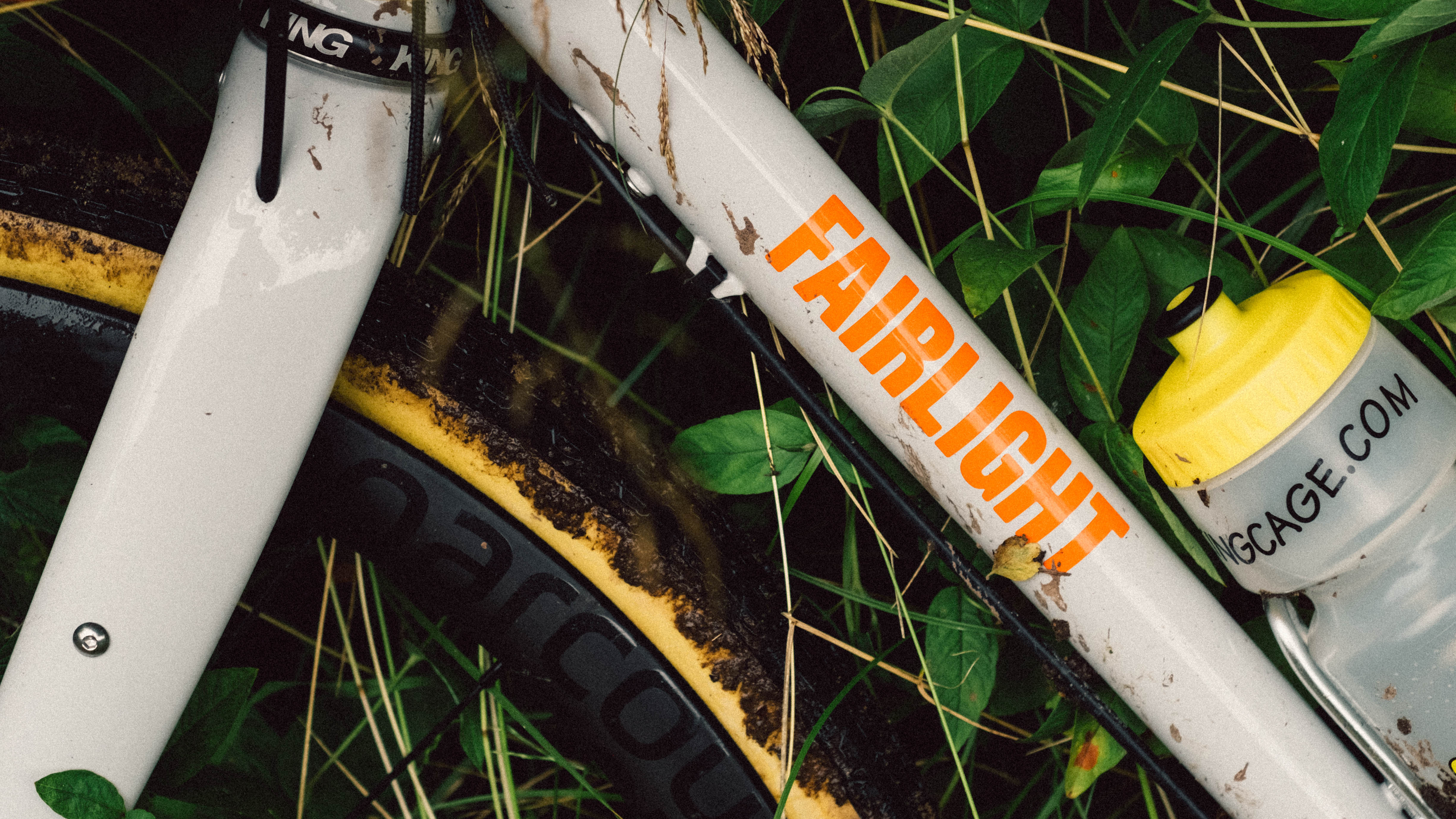
We have been blessed somewhat with an extremely dry summer (sorry to any gardeners reading this), and so mud has been a little harder to come by than usual, though as I live in the north of England it isn't impossible to find. These aren’t mud tyres, but you’ll get through most patches without having to dismount. Again, much more a tyre attuned to hardpack and hotter temperatures.
While the ride quality, speed and grip were all excellent there is inevitably a tradeoff, and that comes when we discuss durability. These tyres do technically have puncture protection, but only under the tread itself, meaning the sidewalls are vulnerable to rocks, thorns, glass etc. My usual testing ground does contain a few thorny bushes but until running these tyres I’d never had an issue. A tiny pinhole in the sidewall eventually left me needing a pickup to get back home, though this was a lot to do with the Challenge Smart Sealant, which I will take some time now to cover also, as Challenge suggests you use it so as to protect the tyre.
I strongly suggest you ignore this advice and run whatever your go-to sealant of choice is. The hole that left me stranded was genuinely a pinhole, one that I could only find after removing and cleaning the tyres following testing. I even dumped a whole emergency bottle of Smart Sealant in, to no avail, by the side of the trail, and in a rather frantic (and slightly low blood sugar) moment, tried glueing some roadside litter over the hole to get me home.
On the flip side, when I refilled the tyre with Squirt sealant and some of its associated little beads, the hole did seal instantly. They aren’t going to fall apart, but it’s a good illustration that they are certainly a more fragile offering than full rubber tyres. If you live in a particularly thorn-rich part of the world, or somewhere with sharp flint or slate I’d suggest these aren’t the right option for you.
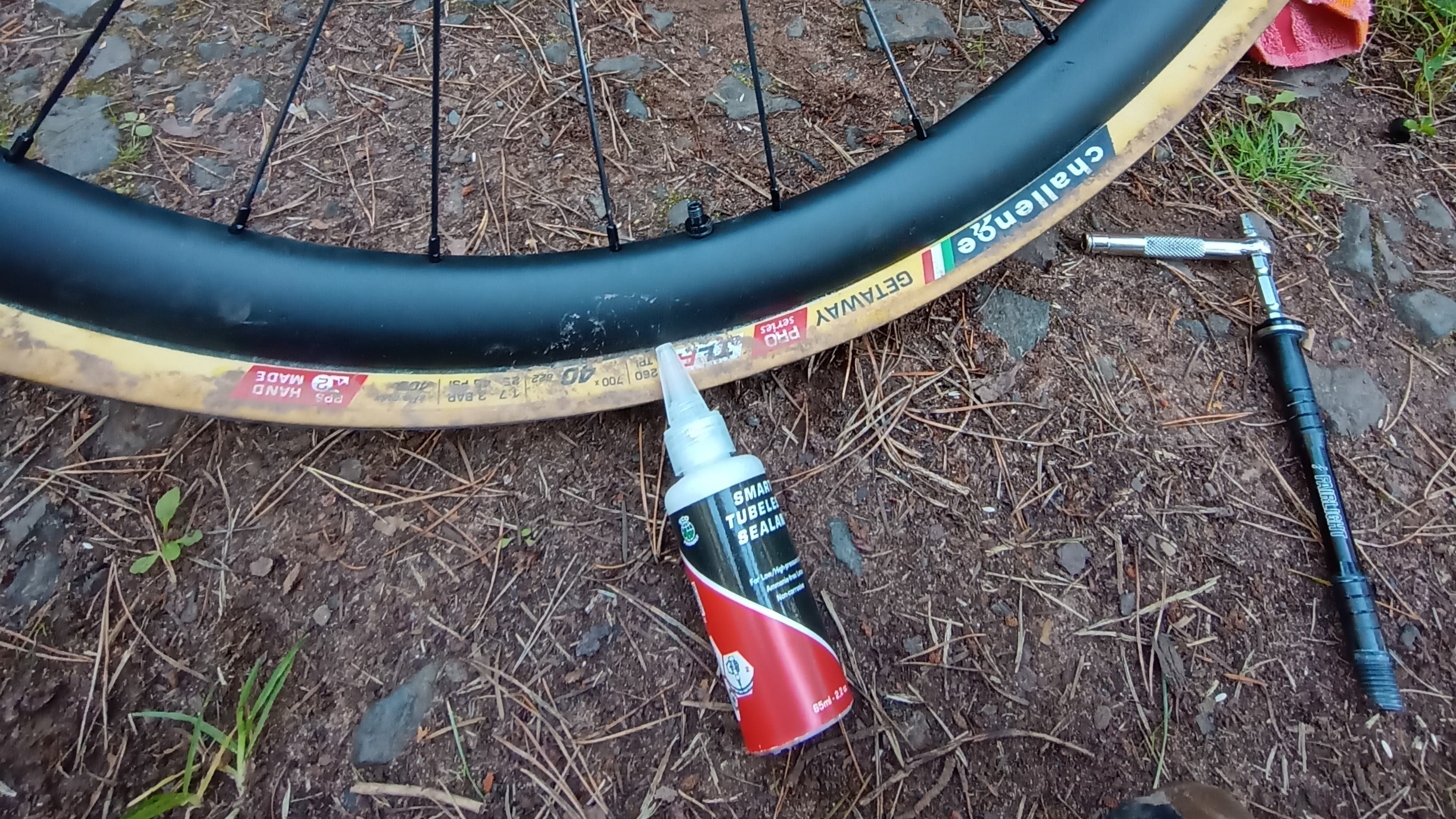

Value
Depending on where you shop, you’re looking at around £80 per tyre, or £160 to kit out your bike. That is at the top end of the spectrum for a gravel tyre, though not absurdly so. If you have the right conditions to make use of them, the Getaways represent a legitimate performance advantage over many other options in my opinion, and as such, the price is a little easier to justify.
As a general purpose tyre, I’d suggest they’re too pricey given the lack of durability, but I am inclined to judge them as the former rather than the latter and suggest that if you are after a general purpose option then you should look to vulcanised rubber models.
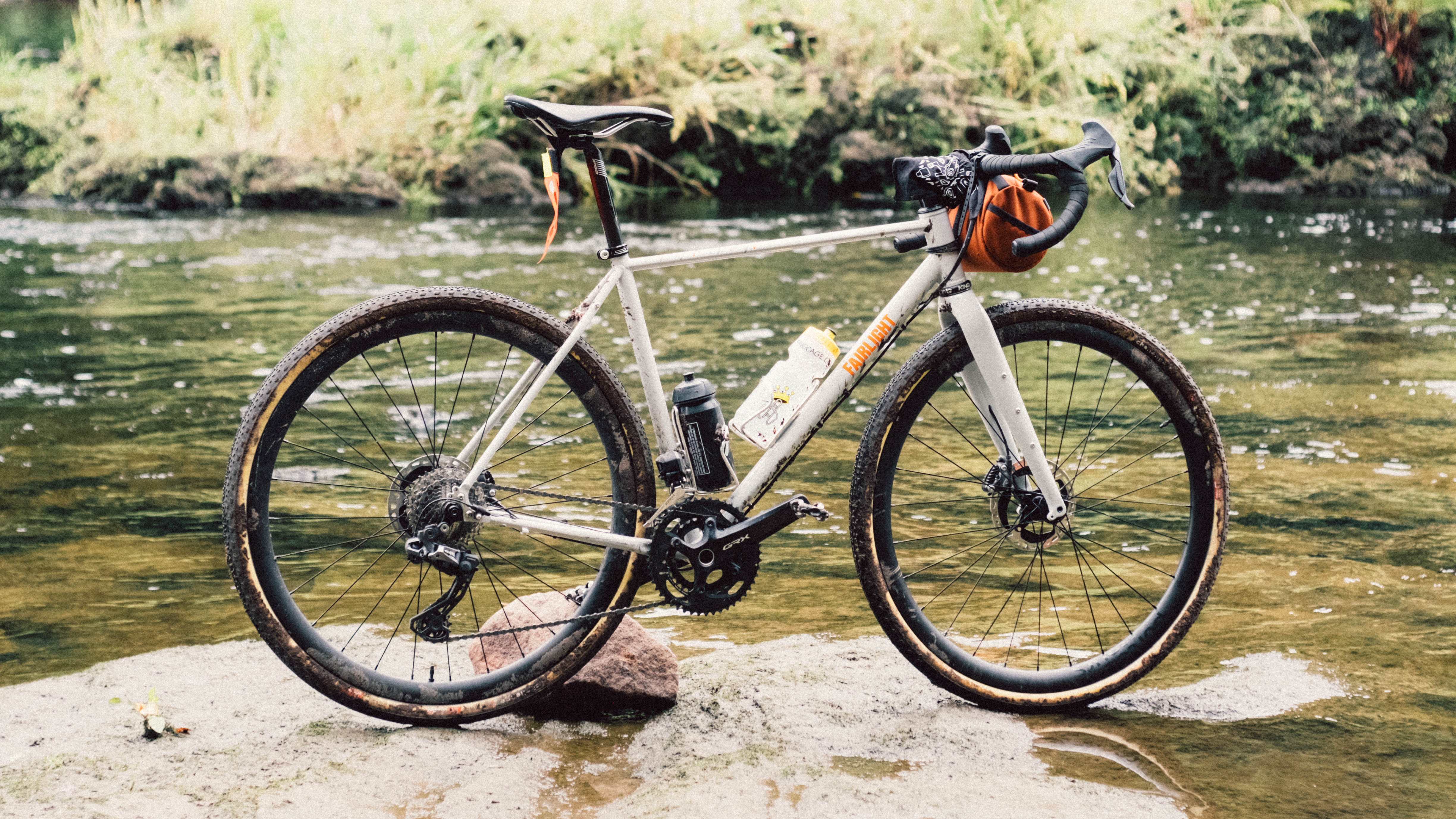
Verdict
The Challenge Getaway is a race tyre, then, or one for an FKT, or those of you willing to spend a little more to get an absolutely sublime ride and don’t mind the greater risk of flatting. Not a fit-and-forget, one size fits all option, but fast, plenty grippy in the right scenarios and able to handle stretches of tarmac without issue. Also, they look cool, which has to be worth something, right?
| Attributes | Notes | Rating |
|---|---|---|
| Design and aesthetics | Good looking, with a well thought out tread pattern for the perceived conditions | 9/10 |
| Performance | For speed and ride quality they really are hard to beat. I think some biigger shoulder lugs would make them even better though | 9/10 |
| Puncture resistance | The sidewalls are very vulnerable. With the right sealant they do alright, the Challenge sealant failed to seal a pin prick. | 5/10 |
| Value | As a race option they aren't outlandish compared to some upgrades. Expensive for general use though. | 7/10 |
| Overall rating | Row 4 - Cell 1 | 75% |

Will joined the Cyclingnews team as a reviews writer in 2022, having previously written for Cyclist, BikeRadar and Advntr. He’s tried his hand at most cycling disciplines, from the standard mix of road, gravel, and mountain bike, to the more unusual like bike polo and tracklocross. He’s made his own bike frames, covered tech news from the biggest races on the planet, and published countless premium galleries thanks to his excellent photographic eye. Also, given he doesn’t ever ride indoors he’s become a real expert on foul-weather riding gear. His collection of bikes is a real smorgasbord, with everything from vintage-style steel tourers through to superlight flat bar hill climb machines.
